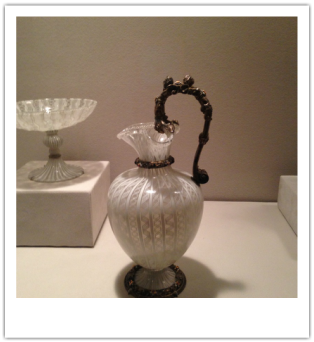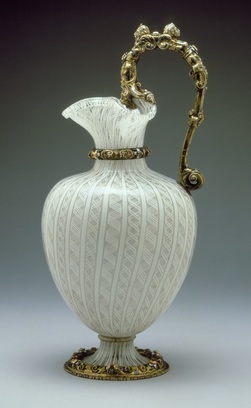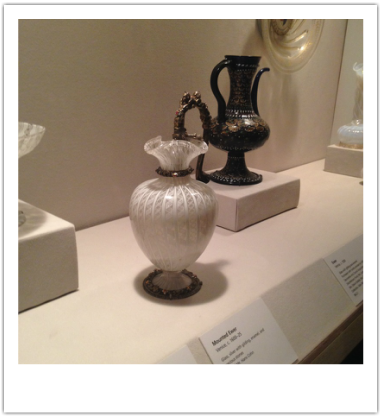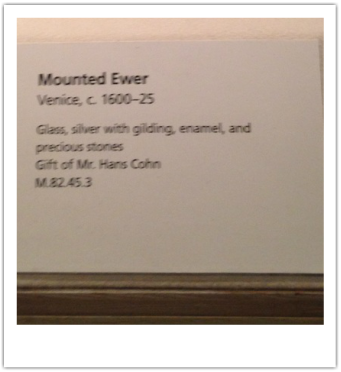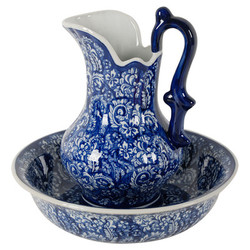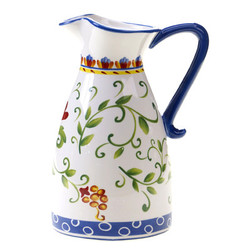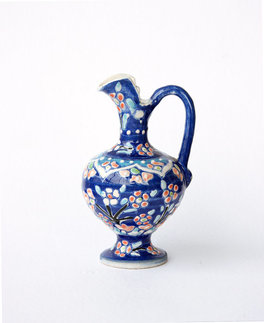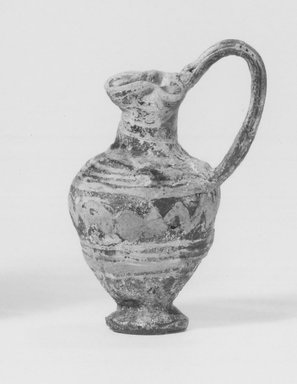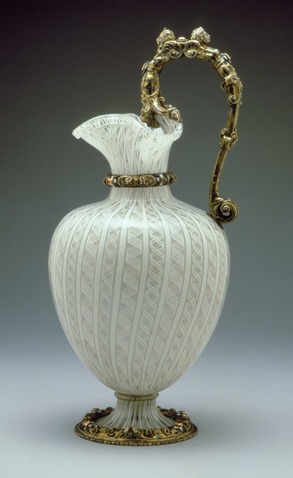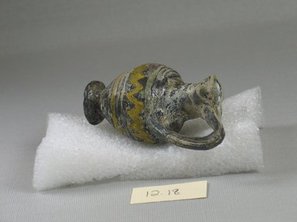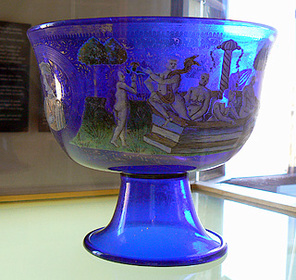Mounted Retorti Ewer
By Ariana Shoaf
Roman Ewer (4th century B.C.)
Angelo Barovier (1400-1460)
Works Cited
Campbell, Gordon. "Cristallo." Grove Art Online. Oxford Art Online. Oxford University Press. Web.28 Nov.2015. <http://www.oxfordartonline.com/subscriber/article/grove/art/T2071616>.
Cooper, John K.D. "Silver." Grove Art Online. Oxford Art Online. Oxford University Press. Web. 29 Nov.2015. <http://www.oxfordartonline.com/subscriber/article/grove/art/T078773>.
“Ewer.” Brooklyn Museum: Egyptian, Classical, Ancient Near Eastern Art:. BrooklynMuseum.org. 2008. Web. 3 Dec. 2015.<https://www.brooklynmuseum.org/opencollection/objects/5793/Ewer>
Goy, Richard J., et al. "Venice." Grove Art Online. Oxford Art Online. Oxford University Press. Web.30 Nov.2015. <http://www.oxfordartonline.com/subscriber/article/grove/art/T088612pg3>.
Kornbluth, Generva. "Rock crystal." Grove Art Online. Oxford Art Online. Oxford University Press.Web. 28 Nov.2015. <http://www.oxfordartonline.com/subscriber/article/grove/art/T072523>.
Mentasti, Rosa Barovier. "Barovier." Grove Art Online. Oxford Art Online. Oxford University Press.Web. 30 Nov.2015. <http://www.oxfordartonline.com/subscriber/article/grove/art/T006472>.
"ruby." The Concise Oxford Dictionary of Art Terms. Oxford Art Online. Oxford University Press.Web. 29 Nov.2015. <http://www.oxfordartonline.com/subscriber/article/opr/t4/e1473>.
Thornton, Dora. “A Documentary Venetian Renaissance Dish In The British Museum.” Journal Of Glass Studies 51. (2009): 76-85. Art Full Text (H.W.Wilson). Web.28.Nov.2015.
"Venetian glass." The Concise Oxford Dictionary of Art Terms. Oxford Art Online. Oxford University Press. Web. 28 Nov.2015. <http://www.oxfordartonline.com/subscriber/article/opr/t4/e1739>.
Cooper, John K.D. "Silver." Grove Art Online. Oxford Art Online. Oxford University Press. Web. 29 Nov.2015. <http://www.oxfordartonline.com/subscriber/article/grove/art/T078773>.
“Ewer.” Brooklyn Museum: Egyptian, Classical, Ancient Near Eastern Art:. BrooklynMuseum.org. 2008. Web. 3 Dec. 2015.<https://www.brooklynmuseum.org/opencollection/objects/5793/Ewer>
Goy, Richard J., et al. "Venice." Grove Art Online. Oxford Art Online. Oxford University Press. Web.30 Nov.2015. <http://www.oxfordartonline.com/subscriber/article/grove/art/T088612pg3>.
Kornbluth, Generva. "Rock crystal." Grove Art Online. Oxford Art Online. Oxford University Press.Web. 28 Nov.2015. <http://www.oxfordartonline.com/subscriber/article/grove/art/T072523>.
Mentasti, Rosa Barovier. "Barovier." Grove Art Online. Oxford Art Online. Oxford University Press.Web. 30 Nov.2015. <http://www.oxfordartonline.com/subscriber/article/grove/art/T006472>.
"ruby." The Concise Oxford Dictionary of Art Terms. Oxford Art Online. Oxford University Press.Web. 29 Nov.2015. <http://www.oxfordartonline.com/subscriber/article/opr/t4/e1473>.
Thornton, Dora. “A Documentary Venetian Renaissance Dish In The British Museum.” Journal Of Glass Studies 51. (2009): 76-85. Art Full Text (H.W.Wilson). Web.28.Nov.2015.
"Venetian glass." The Concise Oxford Dictionary of Art Terms. Oxford Art Online. Oxford University Press. Web. 28 Nov.2015. <http://www.oxfordartonline.com/subscriber/article/opr/t4/e1739>.

